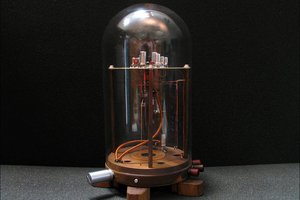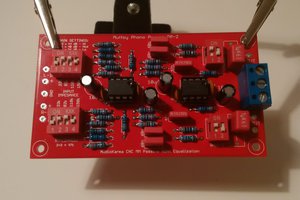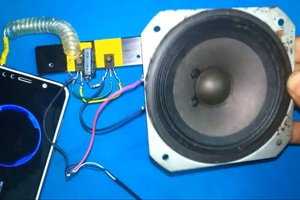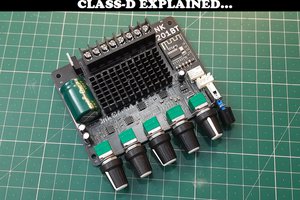*** ATTENTION ***
This project uses mains power.
BE SURE TO KNOW WHAT YOU ARE DOING.
I´m not reliable for any injuries or whatever.
This is a pre-milennial DIY project, completed in 1996. I started it about hating the waste of electrical power in my HiFi equipment.
By habit, I played a music CD when I went to bed. Someone had to turn off all the appliances at the end. Either I was too lazy or slept already, and no one got up to do the job... unsatisfying, isn´t it?
I need a timer which is able to notice the absence of audio signals. If it does that, it would be bad to switch off instantly when no audio is present anymore. A delay is necessary to choose the next audio source. If no source will be choosen, the timer runs out and disconnects the equipment from mains power.
Specification
- in OFF state, no energy should be needed by the timer;
- interference resistance to ambient noise;
- safe electrical construction;
- timer indicator (LED);
- external plug&play unit;
- cheap & small.
Find schematic in FILES section and let´s discuss about.
Power on:
L1_in (Line in) and N (Neutral) are the power lines from wall outlet. You have to press a pushbutton (Taster), connected to X2-5 and X2-6, to start the timer.
If you press, the tiny block transformer TR1 is powered instantly and supplies the circuit (R11 acts as an in-rush limiter for the HIFI equipment connected to L1_out and N).
A Relay K1 energizes and remains on, with its contact 4-5 closed. The timer is on and the equipment is powered.
Power supply circuitry:
The transformer TR1 is followed by a rectifier (D1,2,6,7,) and a filter capacitor. IC1 regulates the voltage to +5V. C5 is also a filter, R1 is a discharge resistor.
+9V supplies the relay, +5V is for amplifier and timer circuit.
Timer:
R2 provides the 50/60Hz mains frequency to IC2. C6 is also a filter to cut of unwanted spike signals.
Refer to the datasheet of IC2, a CD4060BE / HEF4060B (PDF), which is a ripple counter consisting of 14 stages.
Look at Fig. 1, Functional diagram and chapter 5.2. is explaining the pin function.
Pin 11 "clock input" is clocked with 50/60Hz. Pin 10 and 9 are unused in my circuit.
By the way: All CMOS series 40xx circuit inputs are equipped with clamping diodes; In this case they are helping not to overload the input with the high AC voltage; R2 limits the current).
The counter divides the incoming frequency by 2 each stage; 2^14 = 16384.
The combination of the Q14 and the Q13 output via R5, R6 act as a logical AND, which let the transistor Q4 remain on until Q13 AND Q14 are getting high state.
As a result, the timer runs 16384 + 8192 cycles (50/60Hz) until the relay disconnects the power.
(16384+8192 = 24576 x 50 [60] Hz ) =419 [409] seconds. Six minutes to choose the next song, before the HiFi is switched off.
Audio detection:
Q1 is a simple amplifier, connected to any free LINE OUT RCA connector at your HiFi receiver or -amplifier.
Q2 acts as a switch, pulsed by the amplified audio signal (adjusted by R12 = sensitivity). Q2s collector "pulses" 5V to the RESET input and restarts the counter from Zero, as long as music / audio is detected. If the input is quiet, the timer runs out and the Relay cuts the mains power.
LED1 and Q3 are connected as an emitter follower. D3 and D5 are combined as a logical OR. When audio signals occur, D3 let blink the LED1 with the rhytm of the music. If no audio input is detected, the timer runs. Q6 then let blink (2^6 =64 divided by 50 [60] Hz ~= one second) the LED, drawing your attention to the need to choose the next song.
Misc.:
C4 an R8 can be used to reduce the relay holding current, which reduces power dissipation in the relay. Has to be tested, it is depending of the relays datasheet.
R1 is needed to discharge the power filter capacitors and also C2. C2 is the Power-on-Reset capacitor, which has to bring the ripple counter to ALL ZERO.
Soweit diese Geschichte. Gruß aus Deutschland!
Entunassa
 Entunassa
Entunassa
 carbono.silício
carbono.silício

 UTSOURCE
UTSOURCE
 Sagar 001
Sagar 001